At the AIDS 2024 special session «Co-Chairs’ Choice» on 24 July, moderated by Sharon Lewin, IAS President, the Peter Doherty Institute for Infection and Immunity, Australia and, Andriy Klepikov, Executive Director of the Alliance for Public Health, Ukraine, and Christoph Spinner from University Hospital rechts der Isar at the Technical University of Munich, Germany, leading scientists, experts, and specialists presented truly unique and groundbreaking information!
In particular, Christian Gaebler from Charité – Universitätsmedizin Berlin presented a groundbreaking case that has captured the attention of the scientific community. His presentation, titled “The Next Berlin Patient: Sustained HIV Remission Surpassing Five Years Without Antiretroviral Therapy After Heterozygous CCR5 WT/Δ32 Allogeneic Hematopoietic Stem Cell Transplantation”, highlighted an extraordinary achievement in the fight against HIV.
Linda-Gail Bekker from the Desmond Tutu Health Foundation in South Africa presented significant interim results from the PURPOSE-1 study in her talk titled “Twice-Yearly Lenacapavir or Daily Emtricitabine/Tenofovir Alafenamide for HIV Prevention in Cisgender Women: Interim Analysis Results from the PURPOSE-1 Study”.
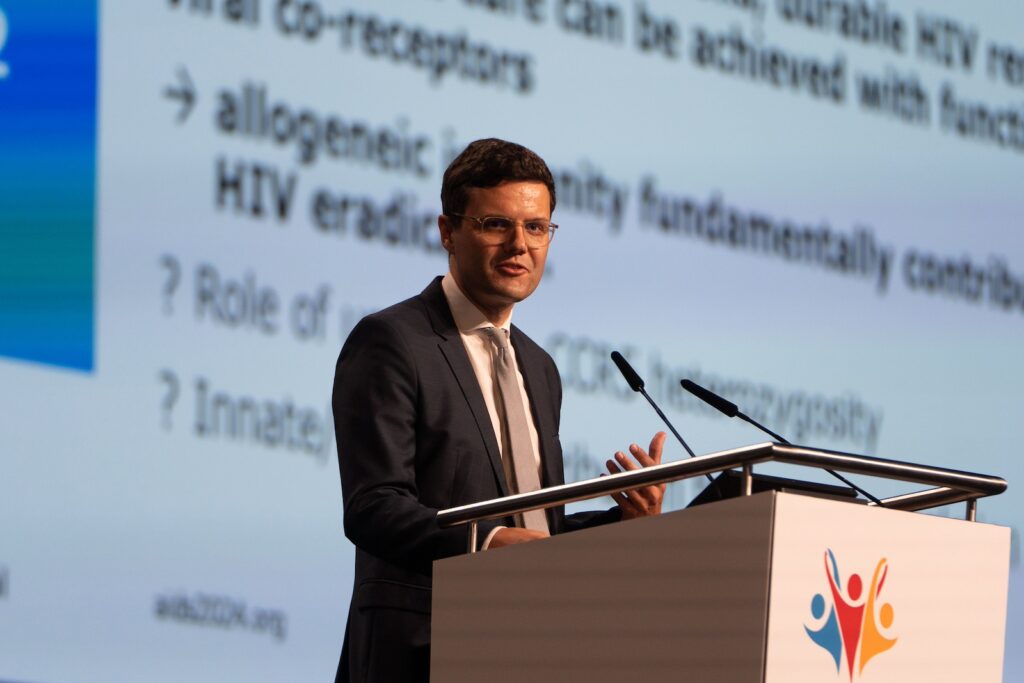
Gaebler introduced the “Next Berlin Patient”, a white male born in 1964 who was diagnosed with HIV in 2009 and later with acute myeloid leukemia. The patient’s HIV diagnosis was followed by a relatively acute infection, as indicated by a negative serological test from 2008. In April 2015, adhering to treatment guidelines, the patient began antiretroviral therapy (ART). Around the same time, he received a diagnosis of leukemia, necessitating a stem cell transplant.
The clinical team, unable to find a donor with the desired homozygous CCR5 Δ32 mutation, selected an HLA-identical female donor heterozygous for the CCR5 Δ32 mutation. The patient underwent reduced-intensity conditioning before the transplant, which was successful. Full donor chimerism was achieved within 28 days and maintained thereafter.
One of the most striking aspects of this case is the sustained HIV remission following the cessation of ART in September 2018. The patient has maintained undetectable viral loads, with no HIV detected in plasma or peripheral blood. Gaebler highlighted that this case defies previous assumptions that CCR5 WT transplants could not sustain long-term HIV remission.
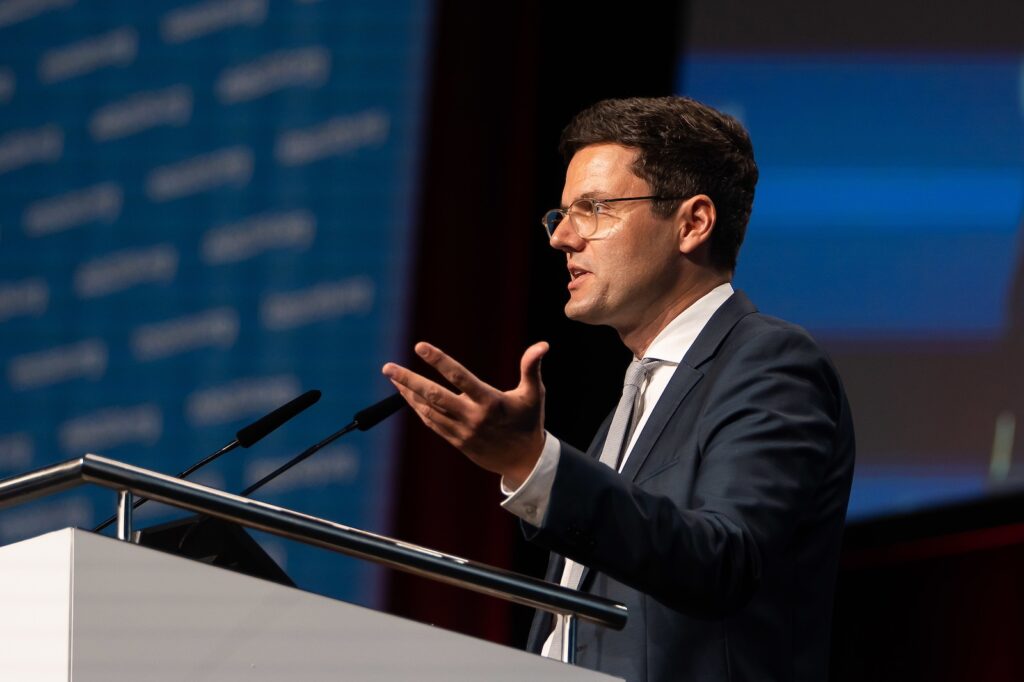
Gaebler’s team conducted extensive research to understand the underlying mechanisms. They confirmed the patient’s CCR5 status both before and after the transplantation and found no significant differences in the number of CCR5-expressing cells compared to controls. However, they did observe lower expression of CCR5 on the surface of CD4 and CD8 T cells in individuals heterozygous for the Δ32 mutation.
Additionally, Gaebler reported that prior to transplantation, the patient’s HIV reservoir size was measurable but not excessively high. Post-transplantation, no signs of HIV DNA were found in peripheral blood or intestinal biopsies, indicating a significant reduction in the HIV reservoir.
Its obious, that the implications of this case are profound! It suggests that HIV remission and potential cure might be achievable through allogeneic stem cell transplantation, even without the CCR5 Δ32 homozygous mutation. This challenges the current understanding and opens new avenues for research and treatment strategies.
Gaebler concluded by expressing the importance of these rare cases in developing scalable solutions for the broader population living with HIV. He acknowledged the contributions of his team, collaborators, and the patient, who chose to remain anonymous but shared a poignant message: “A healthy person has many wishes, a sick person only one.”
This presentation marks a significant milestone in HIV research, offering hope and new directions in the pursuit of a cure.
See the full Abstract here.
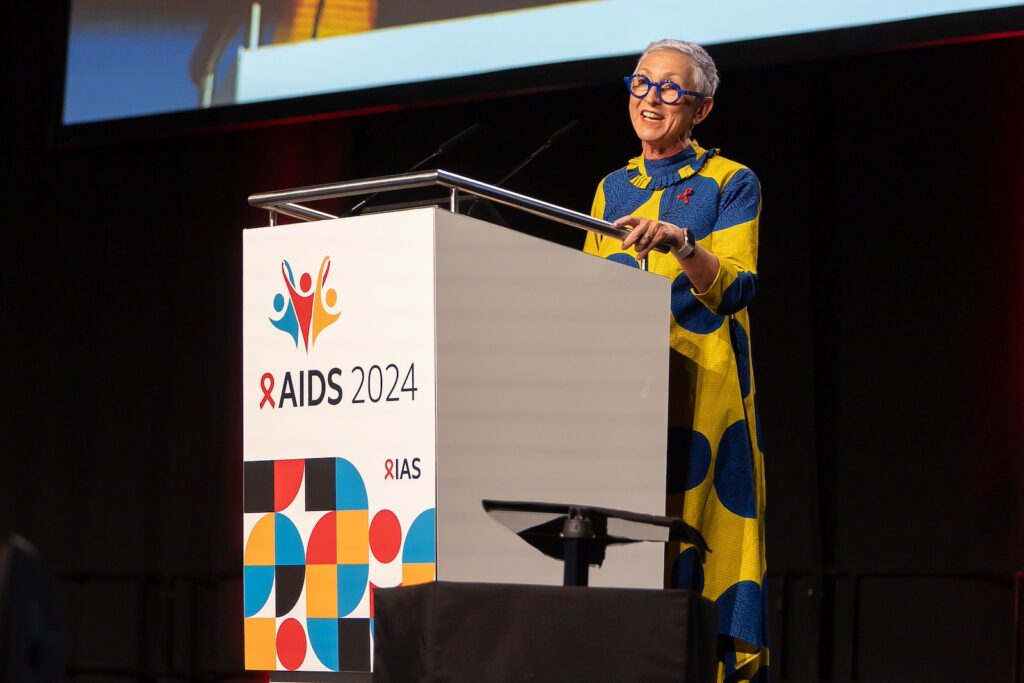
Linda-Gail Bekker from the Desmond Tutu Health Foundation, South Africa, presented significant interim results from the PURPOSE-1 study in her talk titled “Twice-Yearly Lenacapavir or Daily Emtricitabine/Tenofovir Alafenamide for HIV Prevention in Cisgender Women: Interim Analysis Results from the PURPOSE-1 Study”. Her presentation focused on innovative approaches to HIV prevention tailored specifically for cisgender women.
Bekker began by acknowledging the moderators and expressing gratitude for the opportunity to present these late-breaking results. She emphasized the urgent need for diversified HIV prevention options, particularly for young cisgender women in sub-Saharan Africa, where HIV incidence remains high.
Bekker introduced lenacapavir (LEN) as a promising first-in-class, high-potency capsid inhibitor with a long half-life, making it suitable for biannual injections. She contrasted this with the more traditional oral PrEP, highlighting that while oral PrEP has benefited over six million people globally, its daily adherence can be challenging for many young women due to various social, emotional, and physical factors.
The PURPOSE-1 study was designed to compare the efficacy of LEN and F/TAF (emtricitabine/tenofovir alafenamide) against background HIV incidence and daily oral F/TDF (emtricitabine/tenofovir disoproxil fumarate). The trial included young sexually active women aged 16 to 25 from 25 sites in South Africa and 3 in Uganda, regions with high HIV incidence.
Bekker detailed the rigorous screening and enrollment process, which included HIV testing and the exclusion of those with recent HIV infections. Participants were randomized in a 2:2:1 ratio to receive either LEN injections, F/TAF, or F/TDF, with corresponding placebos. The study aimed to follow participants for an extensive period to gather reliable data on HIV incidence and adherence.
The interim analysis, conducted after half of the cohort had completed 52 weeks of follow-up, revealed striking results – zero HIV infections occurred in the LEN group, compared to 39 in the F/TAF group and 16 in the F/TDF group. This demonstrated that LEN provided superior protection against HIV compared to both F/TAF and the background HIV incidence.
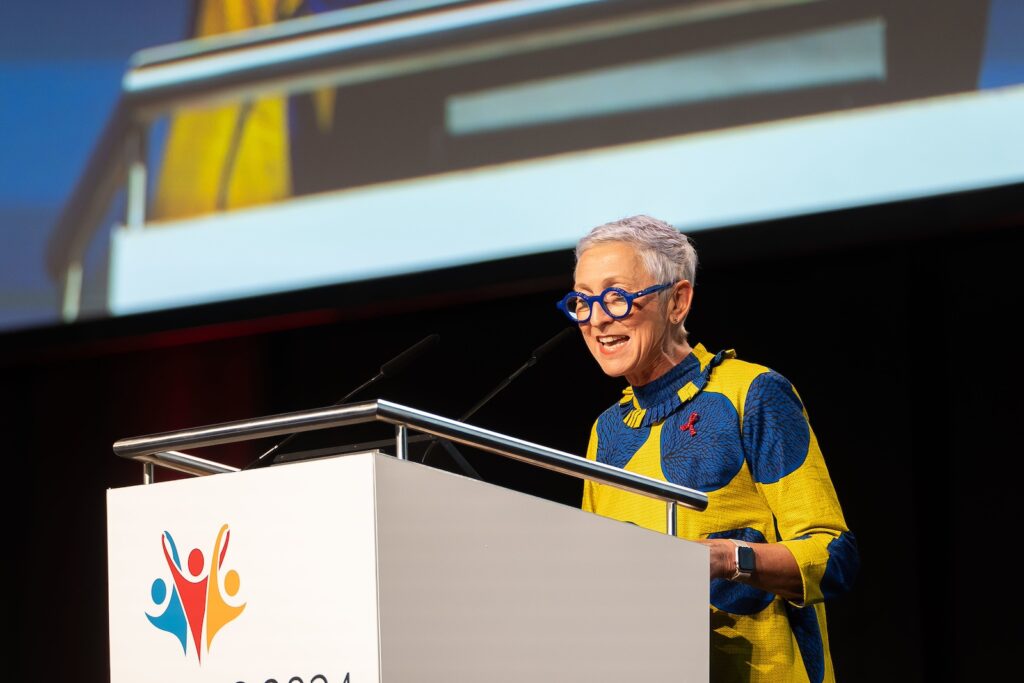
Bekker also discussed adherence rates, noting that LEN had high adherence, with over 90% of injections administered on time. In contrast, adherence to oral PrEP (both F/TAF and F/TDF) was lower and declined over time, correlating with higher HIV incidence in these groups.
Safety and tolerability were key endpoints of the study. Bekker reported that adverse events were mostly mild and similar across all groups. Injection site reactions were the most common adverse events in the LEN group, but these were generally mild and decreased with subsequent doses.
Pregnancy outcomes were also monitored, with 510 pregnancies occurring among participants. The outcomes were consistent with those expected for the population, and ongoing monitoring will continue to assess the safety of LEN in pregnant and lactating women.
Bekker concluded by highlighting the groundbreaking nature of these results, emphasizing that zero HIV infections among women receiving twice-yearly LEN is a significant milestone. She stressed the potential of LEN to overcome adherence challenges associated with daily oral PrEP and contribute substantially to reducing HIV incidence among women globally.
Bekker’s presentation underscored the transformative potential of twice-yearly LEN injections for HIV prevention, setting a new benchmark for HIV prevention strategies and offering hope for more effective and manageable options for at-risk populations.
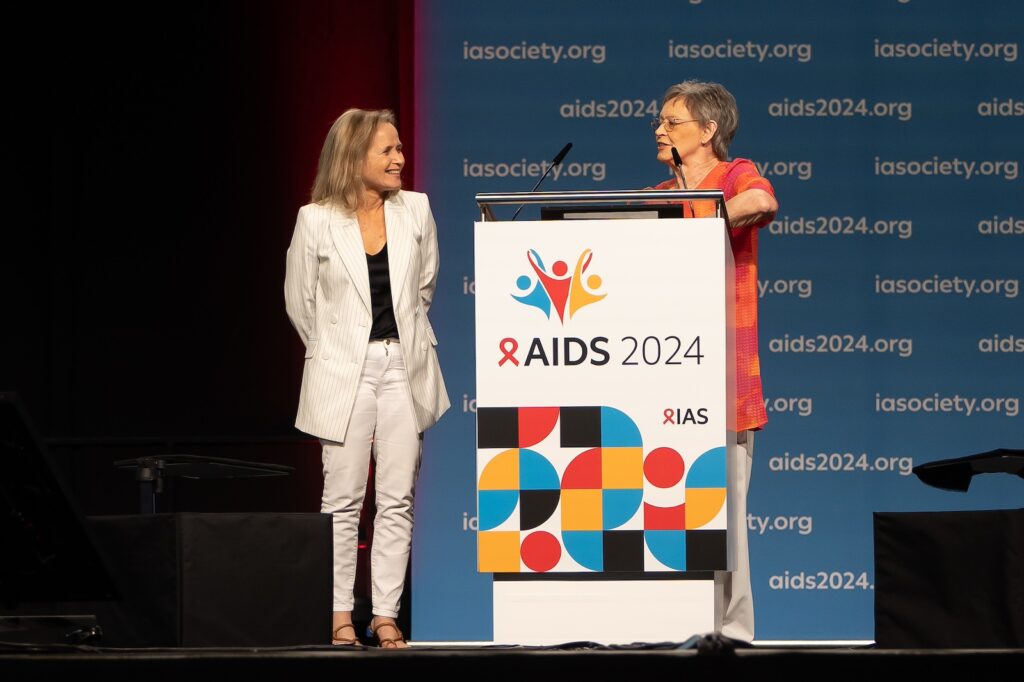
Also, during this special session, Françoise Barré-Sinoussi was honored with the IAS President’s Award, the highest accolade bestowed on behalf of the 30,000 members of the IAS. This prestigious award recognizes individuals who demonstrate exceptional leadership and excellence in the HIV response, achieve significant results, advance knowledge, and support evidence-based programs.
Barré-Sinoussi, a renowned French virologist and Nobel Prize laureate in Physiology or Medicine in 2008—an honor she shared with Harald zur Hausen and Luc Montagnier—was acknowledged for her pivotal role in the 1983 discovery of the HIV retrovirus, which causes acquired immunodeficiency syndrome (AIDS).
Learn more about Eastern Europe and Central Asia at AIDS 2024: aids2024.virusoff.info
Follow us on social media to keep up with important updates:
Instagram – Virus off
Facebook – Virus Off



